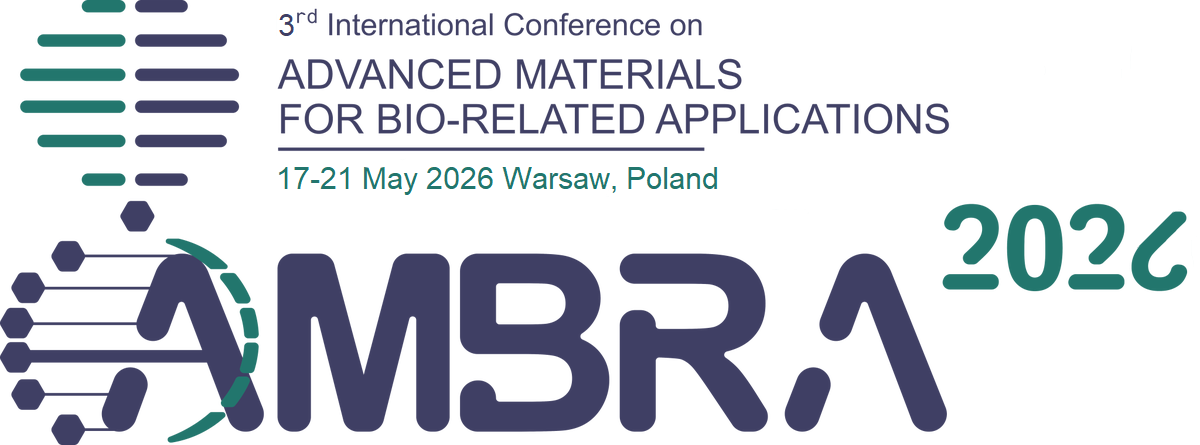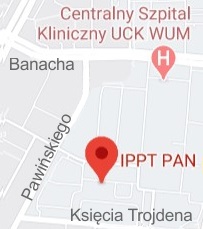| 1. |
Byra M., Szmigielski C.♦, Kalinowski P.♦, Paluszkiewicz R.♦, Ziarkiewicz-Wróblewska B.♦, Zieniewicz K.♦, Styczyński G.♦, Ultrasound and biomarker based assessment of hepatic steatosis in patients with severe obesity,
POLISH ARCHIVES OF INTERNAL MEDICINE, ISSN: 1897-9483, DOI: 10.20452/pamw.16343, Vol.1, pp.1-23, 2022 Abstract:
Introduction: Nonalcoholic fatty liver disease (NAFLD) is a common liver abnormality, but its non-invasive diagnosis in patients with severe obesity remains difficult.
Objectives: To investigate the usefulness of the ultrasound (US) based hepatorenal index (HRI) technique, and two biomarker-based methods, including the hepatic steatosis index (HSI) and NAFLD logit score for the diagnosis of NAFLD in subjects referred for the bariatric surgery.
Patients and methods: 162 subjects, 106 with NAFLD, admitted for the bariatric surgery participated in the study. Fat fraction level and the presence of NAFLD were determined using surgical liver biopsy. Each patient underwent liver US examination and blood tests to determine the HRI, HSI and NAFLD logit score.
Results: For the NAFLD diagnosis, the HRI, HSI and NAFLD logit score techniques achieved areas under the receiver operating characteristic curves of 0.879, 0.577 and 0.825, respectively. The Spearman’s correlation coefficients between the liver fat fraction values and the HRI, HSI and NAFLD logit score were equal to 0.695, 0.215 and 0.595, respectively. The optimal cut-off values for the NAFLD diagnosis for the HRI, HSI and NAFLD logit score were equal to 1.12, 56.1 and 0.59, and significantly differed from the cut-off values reported for the general population in the literature.
Conclusions: Our study confirms the usefulness of only two out of three techniques, the HRI and the NAFLD logit score for the diagnosis of NAFLD in patients with severe obesity. Methods designed for the general population require different cut-off values to achieve accurate performance in severe obesity.
Keywords:
biomarkers, fatty liver disease, hepatorenal index, obesity, ultrasound Affiliations:
| Byra M. | - | IPPT PAN | | Szmigielski C. | - | Medical University of Warsaw (PL) | | Kalinowski P. | - | Medical University of Warsaw (PL) | | Paluszkiewicz R. | - | Medical University of Warsaw (PL) | | Ziarkiewicz-Wróblewska B. | - | Medical University of Warsaw (PL) | | Zieniewicz K. | - | Medical University of Warsaw (PL) | | Styczyński G. | - | Medical University of Warsaw (PL) |
|  |
| 2. |
Karwat P., Klimonda Z., Styczyński G.♦, Szmigielski C.♦, Litniewski J., Aortic root movement correlation with the function of the left ventricle,
Scientific Reports, ISSN: 2045-2322, DOI: 10.1038/s41598-021-83278-x, Vol.11, pp.4473-1-8, 2021 Abstract:
Echocardiographic assessment of systolic and diastolic function of the heart is often limited by image quality. However, the aortic root is well visualized in most patients. We hypothesize that the aortic root motion may correlate with the systolic and diastolic function of the left ventricle of the heart. Data obtained from 101 healthy volunteers (mean age 46.6 ± 12.4) was used in the study. The data contained sequences of standard two-dimensional (2D) echocardiographic B-mode (brightness mode, classical ultrasound grayscale presentation) images corresponding to single cardiac cycles. They also included sets of standard echocardiographic Doppler parameters of the left ventricular systolic and diastolic function. For each B-mode image sequence, the aortic root was tracked with use of a correlation tracking algorithm and systolic and diastolic values of traveled distances and velocities were determined. The aortic root motion parameters were correlated with the standard Doppler parameters used for the assessment of LV function. The aortic root diastolic distance (ARDD) mean value was 1.66 ± 0.26 cm and showed significant, moderate correlation (r up to 0.59, p < 0.0001) with selected left ventricular diastolic Doppler parameters. The aortic root maximal diastolic velocity (ARDV) was 10.8 ± 2.4 cm/s and also correlated (r up to 0.51, p < 0.0001) with some left ventricular diastolic Doppler parameters. The aortic root systolic distance (ARSD) was 1.63 ± 0.19 cm and showed no significant moderate correlation (all r values < 0.40). The aortic root maximal systolic velocity (ARSV) was 9.2 ± 1.6 cm/s and correlated in moderate range only with peak systolic velocity of medial mitral annulus (r = 0.44, p < 0.0001). Based on these results, we conclude, that in healthy subjects, aortic root motion parameters correlate significantly with established measurements of left ventricular function. Aortic root motion parameters can be especially useful in patients with low ultrasound image quality precluding usage of typical LV function parameters. Affiliations:
| Karwat P. | - | IPPT PAN | | Klimonda Z. | - | IPPT PAN | | Styczyński G. | - | Medical University of Warsaw (PL) | | Szmigielski C. | - | Medical University of Warsaw (PL) | | Litniewski J. | - | IPPT PAN |
|  |
| 3. |
Strzelczyk J.♦, Kalinowski P.♦, Zieniewicz K.♦, Szmigielski C.♦, Byra M., Styczyński G.♦, The influence of surgical weight reduction on left atrial strain,
Obesity Surgery, ISSN: 0960-8923, DOI: 10.1007/s11695-021-05710-5, Vol.31, pp.5243-5250, 2021 Abstract:
Background: Obesity increases and surgical weight reduction decreases the risk of atrial fibrillation (AF) and heart failure (HF). We hypothesized that surgically induced weight loss may favorably affect left atrial (LA) mechanical function measured by longitudinal strain, which has recently emerged as an independent imaging biomarker of increased AF and HF risk. Methods: We retrospectively evaluated echocardiograms performed before and 12.2 ± 2.2 months after bariatric surgery in 65 patients with severe obesity (mean age 39 [36; 47] years, 72% of females) with no known cardiac disease or arrhythmia. The LA mechanical function was measured by the longitudinal strain using the semi-automatic speckle tracking method. Results: After surgery, body mass index decreased from 43.72 ± 4.34 to 30.04 ± 4.33 kg/m2. We observed a significant improvement in all components of the LA strain. LA reservoir strain (LASR) and LA conduit strain (LASCD) significantly increased (35.7% vs 38.95%, p = 0.0005 and − 19.6% vs − 24.4%, p < 0.0001) and LA contraction strain (LASCT) significantly decreased (− 16% vs − 14%, p = 0.0075). There was a significant correlation between an increase in LASR and LASCD and the improvement in parameters of left ventricular diastolic and longitudinal systolic function (increase in E’ and MAPSE). Another significant correlation was identified between the decrease in LASCT and an improvement in LA function (decrease in A’). Conclusions: The left atrial mechanical function improves after bariatric surgery. It is partially explained by the beneficial effect of weight reduction on the left ventricular diastolic and longitudinal systolic function. This effect may contribute to decreased risk of AF and HF after bariatric surgery. Keywords:
left atrial strain, bariatric surgery, atrial fibrillation, heart failure Affiliations:
| Strzelczyk J. | - | other affiliation | | Kalinowski P. | - | Medical University of Warsaw (PL) | | Zieniewicz K. | - | Medical University of Warsaw (PL) | | Szmigielski C. | - | Medical University of Warsaw (PL) | | Byra M. | - | IPPT PAN | | Styczyński G. | - | Medical University of Warsaw (PL) |
|  |
| 4. |
Byra M., Styczyński G.♦, Szmigielski C.♦, Kalinowski P.♦, Michałowski Ł.♦, Paluszkiewicz R.♦, Ziarkiewicz-Wróblewska B.♦, Zieniewicz K.♦, Sobieraj P.♦, Nowicki A., Transfer learning with deep convolutiona lneural network for liver steatosis assessment in ultrasound images,
International Journal of Computer Assisted Radiology and Surgery, ISSN: 1861-6410, DOI: 10.1007/s11548-018-1843-2, Vol.13, No.12, pp.1895-1903, 2018 Abstract:
Purpose
The nonalcoholic fatty liver disease is the most common liver abnormality. Up to date, liver biopsy is the reference standard for direct liver steatosis quantification in hepatic tissue samples. In this paper we propose a neural network-based approach for nonalcoholic fatty liver disease assessment in ultrasound.
Methods
We used the Inception-ResNet-v2 deep convolutional neural network pre-trained on the ImageNet dataset to extract high-level features in liver B-mode ultrasound image sequences. The steatosis level of each liver was graded by wedge biopsy. The proposed approach was compared with the hepatorenal index technique and the gray-level co-occurrence matrix algorithm. After the feature extraction, we applied the support vector machine algorithm to classify images containing fatty liver. Based on liver biopsy, the fatty liver was defined to have more than 5% of hepatocytes with steatosis. Next, we used the features and the Lasso regression method to assess the steatosis level.
Results
The area under the receiver operating characteristics curve obtained using the proposed approach was equal to 0.977, being higher than the one obtained with the hepatorenal index method, 0.959, and much higher than in the case of the gray-level co-occurrence matrix algorithm, 0.893. For regression the Spearman correlation coefficients between the steatosis level and the proposed approach, the hepatorenal index and the gray-level co-occurrence matrix algorithm were equal to 0.78, 0.80 and 0.39, respectively.
Conclusions
The proposed approach may help the sonographers automatically diagnose the amount of fat in the liver. The presented approach is efficient and in comparison with other methods does not require the sonographers to select the region of interest. Keywords:
Nonalcoholic fatty, liver disease, Ultrasound imaging Deep learning, Convolutional neural networks, Hepatorenal index, Transfer learning Affiliations:
| Byra M. | - | IPPT PAN | | Styczyński G. | - | Medical University of Warsaw (PL) | | Szmigielski C. | - | Medical University of Warsaw (PL) | | Kalinowski P. | - | Medical University of Warsaw (PL) | | Michałowski Ł. | - | Medical University of Warsaw (PL) | | Paluszkiewicz R. | - | Medical University of Warsaw (PL) | | Ziarkiewicz-Wróblewska B. | - | Medical University of Warsaw (PL) | | Zieniewicz K. | - | Medical University of Warsaw (PL) | | Sobieraj P. | - | Medical University of Warsaw (PL) | | Nowicki A. | - | IPPT PAN |
|  |




















